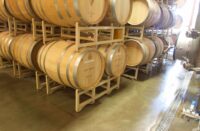The Portland Cement Association (PCA) announced the winners of the 2019 Safety Innovation Awards, which recognize creative safety-enhancing projects in the cement industry. Presented at the 3rdAnnual Cement and Concrete Fly-In event, the winners were determined by a panel of judges that evaluated innovative submissions from across the country in five categories: distribution, pyro-processing, general facility, quarry and mine, and milling and grinding.
“The American cement industry cares deeply about workplace safety and these projects prove that,” said PCA President and CEO Michael Ireland. “We are proud of these efforts to pursue excellence in safety innovation for their company and their colleagues.”
The following are the 2019 Safety Innovation Award winners:
Quarry and Mine
Ash Grove Cement Company — Louisville, Nebraska
D10 Dozer Power Step: Ash Grove Cement Company’s Power Step system eliminates the need for employees to ascend and descend the dozer in the traditional way, making access safer and more efficient for operators and maintenance personnel, particularly during inclement weather. The Power Step attaches to the frame of the dozer and works hydraulically. At ground level, the operator steps into a small, railed platform and affixes a chain across the entry. Using hand controls, he/she activates the hydraulics which then smoothly raises the Power Step to the operator’s deck on the dozer. When exiting, the process is reversed except that the latch mechanism is released. The Power Step has a fail-safe feature that slowly lowers the platform to the ground if hydraulic pressure is lost.
Facilities
Ash Grove Cement Company — Durkee, Oregon
Conveyor Emergency Stop Cord Gauge: Ash Grove Cement Company’s facility beltlines have an emergency stop cord running alongside that if pulled will cause the beltline and other in-line devices to shut down. Emergency cords are inspected weekly but due to variation between inspectors, the pull cord could be loosened or tightened each week simply due to its appearance. To solve this problem, a tension gauge reference device was fabricated and installed on several beltlines. These gauges are large enough to have three color coded level markers: Red—Tight; Green—Good; and Yellow—Loose. This new gauge gives an instant visual reference for maintenance inspectors allowing them to quickly determine the exact tension of the emergency stop cord so they can make immediate adjustments if needed.
Facilities
Ash Grove Cement Company — Foreman, Arkansas
Oil Skid with Onboard Electric Pump: Ash Grove Cement Company developed an oil skid which enables the oiler to safely transport large quantities of oil closer to the equipment for which it is intended, reducing the potential for back and crush injuries. The skid is securely attached to a forklift by safety chains and, with the onboard electric pump, oil can be pumped to any equipment that’s within 50 feet of the skid. The skid can also be used to remove oil by putting the suction hose into the oil reservoir of the equipment or attaching it to the drain plug.
Distribution
Votorantim Cimentos, St. Marys Cement — Detroit, Michigan
Increased Pneumatic Nozzle Size to Reduce Noise: Votorantim Cimentos/St. Marys Cement was challenged with high back-pressure on its pneumatic conveying pipelines causing an excessively noisy environment with dosimeter readings reaching 107dBs. The team developed a plan to increase the air nozzle size by an average of 60% in three mills which resulted in dosimeter readings dropping by 42%. These modifications also increased the life span of the rotary compressor blades; and ultimately the compressors. The changes made a quieter work environment by improving working conditions, lowering risk, and reducing the requirement for dual hearing protection.
Pyro-Processing
Buzzi Unicem USA — Festus, Missouri
Automated Clinker Cooler Sampler: Buzzi Unicem USA designed a simple single-action tray sampler that could be pushed under the falling clinker hydraulically. Once the device collects clinker, and while being pulled back, it allows the sample to fall into the chute by means of a pusher plate. This sampler is fully automated taking samples whenever the cooler/crusher calls for them and can be removed making maintenance easier and safer. The design phase for this project took two weeks while installation only took a few days. The sampler keeps workers out of the hot and dusty clinker cooler environment.
Milling and Grinding
Salt River Materials Group — Clarkdale, Arizona
Table Liner Lifting Clamp: Salt River Materials Group along with Arizona Equipment Fabrication created a new way to remove damaged Vertical Finishing Mill Table Liners. The teams developed a clamp style lifting device that is made out of three foot plate steel with adjustable ends that are bent at an obtuse angle to fit the contour of the liner. The new clamping system can be operated by one person and the operator can remove or install liners in half the time of prior operations. The clamps have virtually eliminated load shifting hazards and the resulting crushing, sprain, and strain injuries.
For more information, please visit www.cement.org/awards.
About The Portland Cement Association (PCA)
The Portland Cement Association (PCA) founded in 1916, represents 93 percent of U.S. cement production capacity and have facilities in all 50 states. The association promotes safety, sustainability, and innovation in all aspects of construction, fosters continuous improvement in cement manufacturing and distribution and generally promotes economic growth and sound infrastructure investment.












